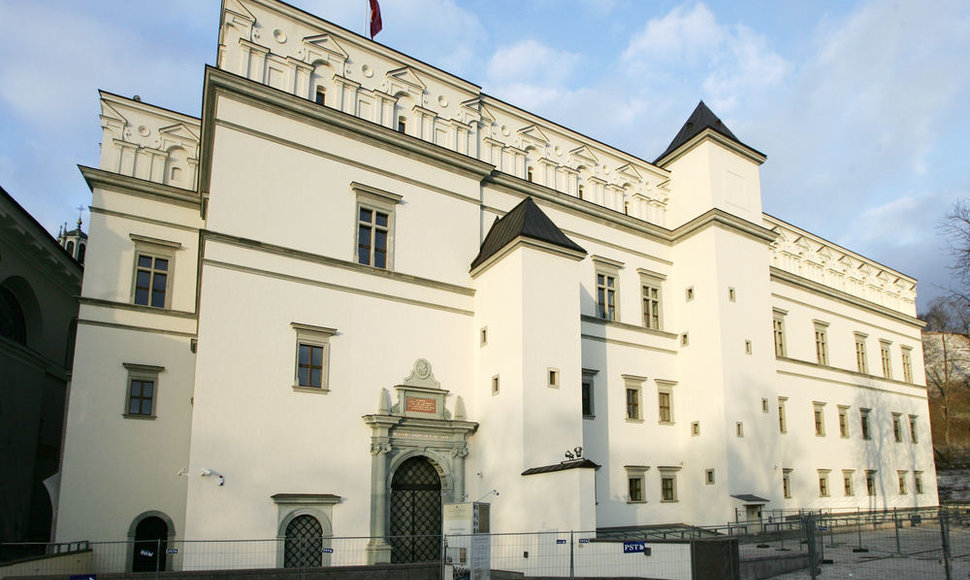Read part I of the interview here
– One of the main areas of work for envoys in 16-17th centuries must have been marriage diplomacy?
– Yes, royal marriages were a business for diplomats. For example, Sigismund Augustus was very reluctant to marry Catherine of Habsburg, but she was forced upon him. And it was not in the interests of the Radziwills alone.
Ivan the Terrible wanted to marry Catherine Jagiellon, who married John Vasa, the Duke of Finland. But this did not sparkle a war with Moscow. Diplomats somehow managed to settle the issue peacefully. Or take the imprisonment and release of John and Catherine Vasa. Diplomats can do a lot in processes like that.
 |
| BFL nuotr./Jūratė Kiaupienė |
However, we do not have much academic research done on the subject. In general, there are precious few historians dealing with the history of the Grand Duchy of Lithuania. It warrants an entire institute. We could then tackle large-scale research projects – even though we have done a lot over the last twenty years. But it all comes down to individual inclinations of a historian, his or her determination to work dawn until dusk. The Foreign Ministry alone occasionally nudges us to research the history of diplomacy of the Grand Duchy of Lithuania.
– Since we are on the subject of money, how much did diplomacy cost?
– It was as expensive as keeping an army. Only that the Sejm (parliament) would raise taxes to support the army, whereas diplomatic missions were partly paid for by the sovereign and the rest was usually covered by noblemen.
Michael Haraburda (16-century Lithuanian envoy) writes, in the 1570s, that while he was conducting business with envoys of the Turkish Sultan in Vinica, “the money, i.e., 400 threescores Groschen that were intended to support him in this hungry place, with some of the money allocated for the Turkish envoy, who lives near starvation along with the Tatars, are nearly spent.”
When Radziwill the Orphan was offered to join a delegation to the Pope, he refused because he could only commit 15 thousand golden sovereigns for the trip, while it needed 45 thousand.
– Can it be said that the Grand Duchy was carrying out its own independent foreign policy, not one in tandem with the Polish Crown?
– Yes, it is true in the period before the Union of Lublin (1569). Throughout the 17-18 centuries, interests grew more harmonious, but relations with Moscow were officially entrusted to Lithuanian diplomats until the very end of the Polish-Lithuanian Commonwealth. Interests of the Grand Duchy would naturally come first in these dealings.
– What about official visits and other diplomatic work?
– One of the more celebrated campaigns took place under Sigismund I the Old, when Konstantin Ostrogski won the battle of Orsha. Strategically speaking, the battle was of no particular importance, but the court of Sigismund the Old and Polish and Lithuanian diplomats managed to exaggerate its significance to their own advantage. Lithuanians captured many high Muscovite prisoners and paraded them around Europe in cages. Sigismund the Old organized the campaign as sovereign of both countries – King of Poland and Grand Duke of Lithuania.
1515 Vienna Congress, attended by Sigismund the Old and an orchestra of a hundred people from the Grand Duchy sent by Radziwill, took note of Lithuanians' efforts – an obscure barbarian nation made an impression on the Empire.
– How provincial did the Grand Duchy look compared to Western Europe? For example, Radziwill the Brown threw so pompous a reception for English envoy John Horsey, who was on his way from Moscow, as if he had been the King of England himself.
– No, it was not provincial. There were cultural differences, contrasts in attire, but these things became more prominent after the Union of Lublin. In terms of fashions, the Grand Duchy was even more western than Poland. The Polish nobility started linking their ancestry to the Sarmatians early on. Thus the Sarmatian, oriental, fashions. And since Lithuanians attributed their pedigree to Palemon and the Romans – and Italian fashions came via Bona Sforza – clothes and other things in the Grand Duchy would often be more western than in Poland. Let's remember the famous Radziwill armour kept in one of the castles in Tirol. Gorgeous armour it was!
One thing that differentiated the Grand Duchy from the West significantly was the weaponry of the noblemen's army. But hired troops started dominating from the second half of the 16th century. A lot of credit goes to Stephen Bathory (elected king from Hungary).
Upon becoming the sovereign of the Commonwealth, he had a good grasp on the situation and managed to use the Polish-Lithuanian opposition to his own advantage. He was a good king and did much good for both sides. Despite the fact that Lithuanians, who had supported a Habsburg candidate in the election, did not want him.
– Why did they prefer the Habsburgs? Because they awarded the Radziwills with titles?
– Not only that, there were more links. And not just with the Radziwill family. The Chodkiewiczi, too, had liaisons in Vienna. Besides, from the second half of the 15th century, the entire house of Jagiellon was half Habsburg, on their mothers' side. In short, the Habsburgs were more or less family, despite episodes of tensions and competition.
– And how did the diplomacy of the Grand Duchy change after the Union of Lublin? Did it become narrower and less intense?
– It rather turned eastwards. The Grand Duchy of Lithuania was left in charge of the east. For a time being, only Lithuanian diplomats would be sent there. A little later, Poles started making attempts to include at least one Polish diplomat into these delegations. I could not say if it became narrower. It simply merged into the joint diplomacy of the Commonwealth. There are many things we still do not know – all the studies we've got generally end at 1500s. There are piles of historical materials collecting dust in archives.
– Somewhat of a paradox. So many surviving documents, but so little research. Why is it so?
– Reasons behind it are numerous. Diplomatic documents lay scattered in vaults of many countries. Under the Soviets, our historians were barred from archives in the West, while Russia used to, and still does, restrict access to diplomatic documents in its keeping. Vienna established a foreign affairs archive very early on. Vincas Trumpa (Lithuanian historian) made a short visit there during the Second World War, while the rest of us had no opportunity to go to Vienna under occupation. After 1990, there were other problems. Languages are one of them. A historian of the Grand Duchy must sift through archives in many countries and therefore read many languages – not just Latin. English, so popular nowadays, is definitely not enough.
– In other words, not every young historian could study the history of the Grand Duchy, even if he or she wanted to?
– Indeed. It takes a very long time to prepare someone for the diplomatic history of the Grand Duchy – even a person fluent in languages will have difficulty understanding the letters of Radziwill the Black – his handwriting is monstrous. Another difficulty is to do with funding – working in foreign archives costs a lot. Whereas our state institutions still have little understanding of what an archive is and what working there involves. There was one incident relating to the (rebuilding of the) Royal Palace in Vilnius. Accusations of wasting money were raised and prosecutors opened an investigation. And wasting of money turned out to be the decision to invest not just into bricks and cement, but in historical research as well. Meanwhile the prevailing mentality was this: “What's the use of going there?”
And if someone took two trips to Vienna or some other foreign archive – brace yourself! It took a while before historians managed to explain everyone what researching sources was and what it involved. And it is usually the case that Lithuanian materials are buried in uncatalogued archives. You come across piles of drafts and there suddenly emerges a gorgeous parchment. Such work, unfortunately, requires something more than good will – a lot of time and money, too.
– Speaking of diplomatic letters, did they differ in style from other correspondence at the time?
– One can say that diplomatic letters in the true sense of the word did not appear in the Grand Duchy before the 18th century. A 16-century statesman would write about everything in his letters. He would touch upon state matters, then go on to discuss stomach aches of his children and how to treat worms, then return to the state. Of course, not all letters are like that – it depended on the author and his circumstances.
Serious political reflections can be found in letters addressed to the king. For instance, one 16-century Lithuanian diplomat, sent on a mission to the Empire, instructs his sovereign: “I am sitting idle and observe what others are doing, because I do not get any instructions on what I am supposed to do myself, while the others hold meetings, receptions – so I beg to be dismissed or instructed what to do.”
This attests to a stately manner of thinking. It is particularly true since Casimir Jagiellon. Not just the king, but noblemen, too, felt themselves to impersonate the state, they took responsibility for it. Especially during the interregnum following Sigismund Augustus's death. For instance, the houses of Radziwill and Chodkiewicz quarrelled about everything – money, lands – but they agreed to set their differences aside for the common matter of the state.













